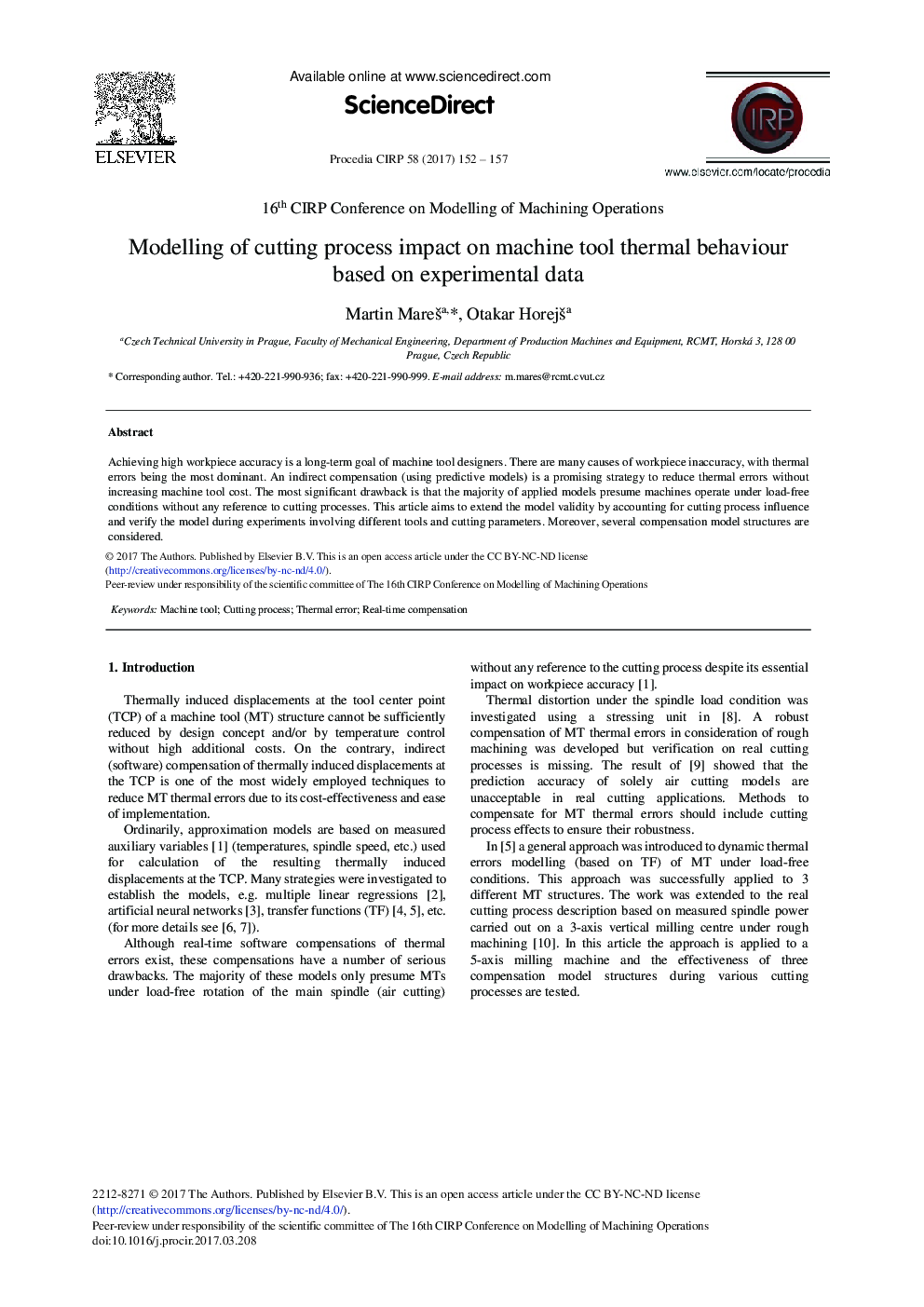| Article ID | Journal | Published Year | Pages | File Type |
|---|---|---|---|---|
| 5470242 | Procedia CIRP | 2017 | 6 Pages |
Abstract
Achieving high workpiece accuracy is a long-term goal of machine tool designers. There are many causes of workpiece inaccuracy, with thermal errors being the most dominant. An indirect compensation (using predictive models) is a promising strategy to reduce thermal errors without increasing machine tool cost. The most significant drawback is that the majority of applied models presume machines operate under load-free conditions without any reference to cutting processes. This article aims to extend the model validity by accounting for cutting process influence and verify the model during experiments involving different tools and cutting parameters. Moreover, several compensation model structures are considered.
Related Topics
Physical Sciences and Engineering
Engineering
Industrial and Manufacturing Engineering
Authors
Martin Mareš, Otakar Horejš,
